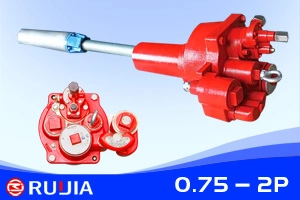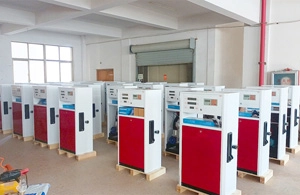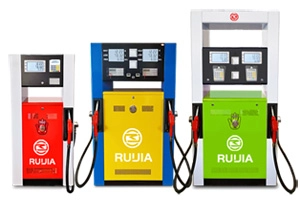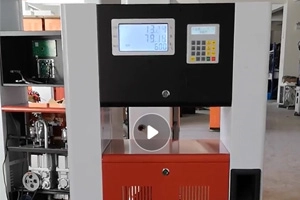- 20+ Years Of History
- 30+ Countries
- 50000 Yearly Production
What is a Diesel Pump
The diesel pump, also known as a fuel injection pump, is an unsung hero in the world of internal combustion engines. While modern advancements in electric vehicles dominate headlines, diesel engines remain indispensable in industries ranging from transportation to heavy machinery. At the heart of their efficiency lies the diesel pump—a precision-engineered device responsible for delivering fuel at high pressure to ensure optimal combustion. This article explores the function, types, and significance of diesel pumps in today’s mechanical ecosystems.
What is a Diesel Pump?
A diesel pump is a mechanical or electronically controlled component designed to pressurize and inject diesel fuel into an engine’s combustion chamber at precisely timed intervals. Unlike gasoline engines, which rely on spark plugs for ignition, diesel engines use compression ignition. This process demands extremely high fuel pressure to atomize diesel into a fine mist, ensuring efficient mixing with compressed air. The diesel pump’s role is to generate this pressure (often exceeding 20,000 psi in modern systems) and regulate fuel delivery to match engine demands.
How Does Diesel Pump Work?
The basic operation involves three stages:
Suction: Fuel is drawn from the tank through a feed pump.
Pressurization: A piston or plunger compresses the fuel to ultra-high pressure.
Injection: The pressurized fuel is delivered to injectors, which spray it into the combustion chamber.
Timing is critical. The pump synchronizes with the engine’s crankshaft to ensure injection occurs at the exact moment the piston reaches the top of its compression stroke. Modern systems integrate electronic control units (ECUs) to adjust injection timing and quantity dynamically, optimizing performance and emissions.
Types of Diesel Pumps
Inline Injection Pumps:
Common in older and heavy-duty engines.
Features multiple plungers aligned in a row, each serving one cylinder.
Robust and reliable but less precise than newer systems.
Distributor Pumps:
Uses a single plunger to supply fuel to all cylinders in sequence.
Compact and lighter, ideal for smaller engines.
Common Rail Direct Injection (CRDI):
The gold standard in modern diesel engines.
A high-pressure accumulator rail supplies fuel to electronically controlled injectors.
Enables multiple injections per cycle, reducing noise and emissions while improving efficiency.
Unit Injectors:
Combine the pump and injector into a single unit per cylinder.
Offers precise control but requires complex maintenance.
Applications of Diesel Pumps
Diesel pumps are ubiquitous in sectors where torque, durability, and fuel efficiency matter:
Transportation: Trucks, buses, ships, and locomotives.
Agriculture: Tractors, harvesters, and irrigation systems.
Construction: Excavators, bulldozers, and generators.
Power Generation: Backup generators and industrial power plants.
Challenges and Maintenance
Diesel pumps operate under extreme conditions, making them prone to wear. Contaminated fuel, air bubbles, or improper lubrication can lead to failures. Key maintenance practices include:
Regular filter replacements to prevent clogging.
Using high-quality fuel to avoid injector deposits.
Periodic calibration to ensure optimal pressure and timing.
Electronically controlled systems (e.g., CRDI) require specialized diagnostic tools for troubleshooting, underscoring the need for skilled technicians.
The Future of Diesel Pump Technology
As emission regulations tighten (e.g., Euro 6 and EPA Tier 4 standards), diesel pump technology continues to evolve. Innovations focus on:
Higher Precision: Piezoelectric injectors for nanosecond-level control.
Hybrid Systems: Integrating diesel pumps with electric drivetrains.
Alternative Fuels: Adapting pumps for biodiesel or synthetic diesel compatibility.
Conclusion
The diesel pump exemplifies engineering excellence, bridging raw mechanical power with refined control. While electrification reshapes the automotive landscape, diesel engines—and the pumps that empower them—will remain vital for decades, particularly in industries where reliability and power are non-negotiable. Understanding and advancing this technology is key to balancing performance with environmental responsibility in the age of sustainable innovation.
The Diesel Pump: Powering Efficiency in Modern Machinery
In the world of internal combustion engines, the diesel pump stands as an unsung hero, quietly ensuring the precise delivery of fuel that keeps industries moving. From heavy-duty trucks to agricultural machinery and backup generators, diesel pumps play a pivotal role in converting energy into motion. This article explores the mechanics, types, and evolving technologies behind diesel pumps, shedding light on their critical importance in today’s mechanized landscape.
The Heart of Diesel Engines
A diesel pump, also known as a fuel injection pump, is responsible for delivering pressurized diesel fuel to the engine’s combustion chambers. Unlike gasoline engines, which rely on spark plugs for ignition, diesel engines compress air to extremely high temperatures, causing injected fuel to ignite spontaneously. The diesel pump’s job is to ensure this fuel is delivered at the right pressure, in the right quantity, and at the exact moment—factors that directly impact engine performance, fuel efficiency, and emissions.
Types of Diesel Pumps
Over the decades, diesel pump designs have evolved to meet changing demands for power and environmental compliance. Three primary types dominate the market:
Inline Injection Pumps
A classic design dating back to the 1920s, inline pumps feature a separate plunger-and-barrel unit for each engine cylinder. These robust pumps are known for their durability and are still used in heavy machinery and marine engines. However, their mechanical complexity and limited precision in modern emission-controlled environments have reduced their prevalence.
Distributor Pumps
Introduced in the 1960s, distributor pumps use a single plunger to serve multiple cylinders, distributing fuel via a rotating distributor head. Lighter and more compact than inline pumps, they became popular in automotive applications. Their simpler design, however, struggles to meet today’s ultra-high-pressure requirements.
Common Rail Systems
The gold standard for modern engines, common rail pumps (part of CRDi systems) separate pressure generation from fuel injection. A high-pressure pump sends fuel to a shared rail, which supplies electronically controlled injectors. This allows for multiple injections per cycle, drastically reducing noise, improving fuel economy, and cutting particulate emissions.
Innovations Driving the Future
As global emissions standards tighten (e.g., Euro 7 and EPA Tier 5), diesel pump technology is undergoing radical changes:
Ultra-High Pressures: Modern pumps now handle pressures exceeding 2,500 bar (36,000 psi), enabling finer atomization of fuel for cleaner combustion.
Smart Sensors: Integration with Engine Control Units (ECUs) and real-time sensors allows adaptive fuel delivery based on load, temperature, and fuel quality.
Biofuel Compatibility: Redesigned seals and materials are enabling pumps to handle biodiesel blends without corrosion or wear.
Hybridization: In hybrid diesel-electric systems, pumps are being optimized for intermittent operation, reducing energy waste during idle periods.
Maintenance: Key to Longevity
Despite their rugged reputation, diesel pumps demand careful maintenance:
Fuel Quality: Contaminated or water-laden diesel can cause catastrophic damage. Regular filter changes and water separators are essential.
Timing Calibration: Even minor misalignment in injection timing can reduce efficiency by 10–15%.
Winter Readiness: In cold climates, ensuring pumps can handle gelling fuel (via additives or heated systems) prevents operational failures.
Conclusion
The diesel pump’s journey from a mechanical workhorse to a digitally managed component mirrors the broader evolution of engine technology. While electric vehicles grab headlines, diesel engines—and the pumps that sustain them—remain irreplaceable in sectors where torque, longevity, and energy density matter. As researchers push the boundaries of hydrogenated biofuels and synthetic diesel alternatives, the diesel pump will continue to adapt, proving its resilience in an era of rapid technological change.
Whether maintaining a fleet of trucks or optimizing a generator, understanding the diesel pump isn’t just about mechanics—it’s about harnessing efficiency in a world that runs on liquid energy.
How Diesel Pumps Work
A diesel pump operates by drawing fuel from the tank and pressurizing it to the required level before injecting it into the engine’s cylinders. The process typically involves two stages: low-pressure pumping and high-pressure injection. The low-pressure pump, often located inside the fuel tank, moves diesel through the fuel lines to the high-pressure pump. This second stage, found in modern engines, generates the immense pressure (often exceeding 20,000 psi) needed for precise fuel atomization.
In older diesel engines, mechanical pumps were common, driven by the engine’s camshaft. However, modern vehicles increasingly use electronic fuel injection systems, where the diesel pump is controlled by the engine’s computer to optimize fuel efficiency and reduce emissions.
Types of Diesel Pumps
Mechanical Fuel Pumps: These are simple, robust devices that rely on engine motion to operate. While durable, they lack the precision of modern systems and are now mostly found in vintage or industrial machinery.
Electric Fuel Pumps: Common in newer vehicles, these pumps are typically mounted inside the fuel tank. They provide consistent pressure and are easier to integrate with electronic control systems.
High-Pressure Common Rail Pumps: A breakthrough in diesel technology, these pumps store fuel at ultra-high pressure in a "common rail" and deliver it to injectors via electronically controlled valves. This allows for multiple injection events per cycle, improving efficiency and reducing noise.
Applications Beyond Automotive
Diesel pumps are not limited to cars. They power heavy machinery, generators, and even marine engines. In agriculture, for example, tractors and harvesters rely on diesel pumps for reliable operation in demanding conditions. In the maritime sector, large ships use specialized diesel pumps to ensure fuel supply across long voyages.
Maintenance and Troubleshooting
A malfunctioning diesel pump can lead to poor engine performance, stalling, or even complete failure. Common issues include clogged filters, worn-out seals, or electrical faults in electric pumps. Regular maintenance—such as replacing fuel filters, using high-quality diesel, and inspecting for leaks—is essential. Modern diagnostic tools also help identify pump-related problems through error codes.
The Future of Diesel Pumps
As the automotive industry shifts toward electrification, diesel pumps face challenges. However, their role in heavy-duty and industrial applications remains vital. Innovations like hybrid diesel-electric systems and advanced emission control technologies continue to evolve, ensuring diesel pumps adapt to stricter environmental standards.
In conclusion, diesel pumps are unsung heroes of modern engineering. Their ability to deliver fuel with precision and reliability under extreme conditions underscores their importance in powering everything from everyday vehicles to critical infrastructure. As technology advances, these pumps will likely continue to evolve, balancing efficiency, sustainability, and performance in an ever-changing energy landscape.







